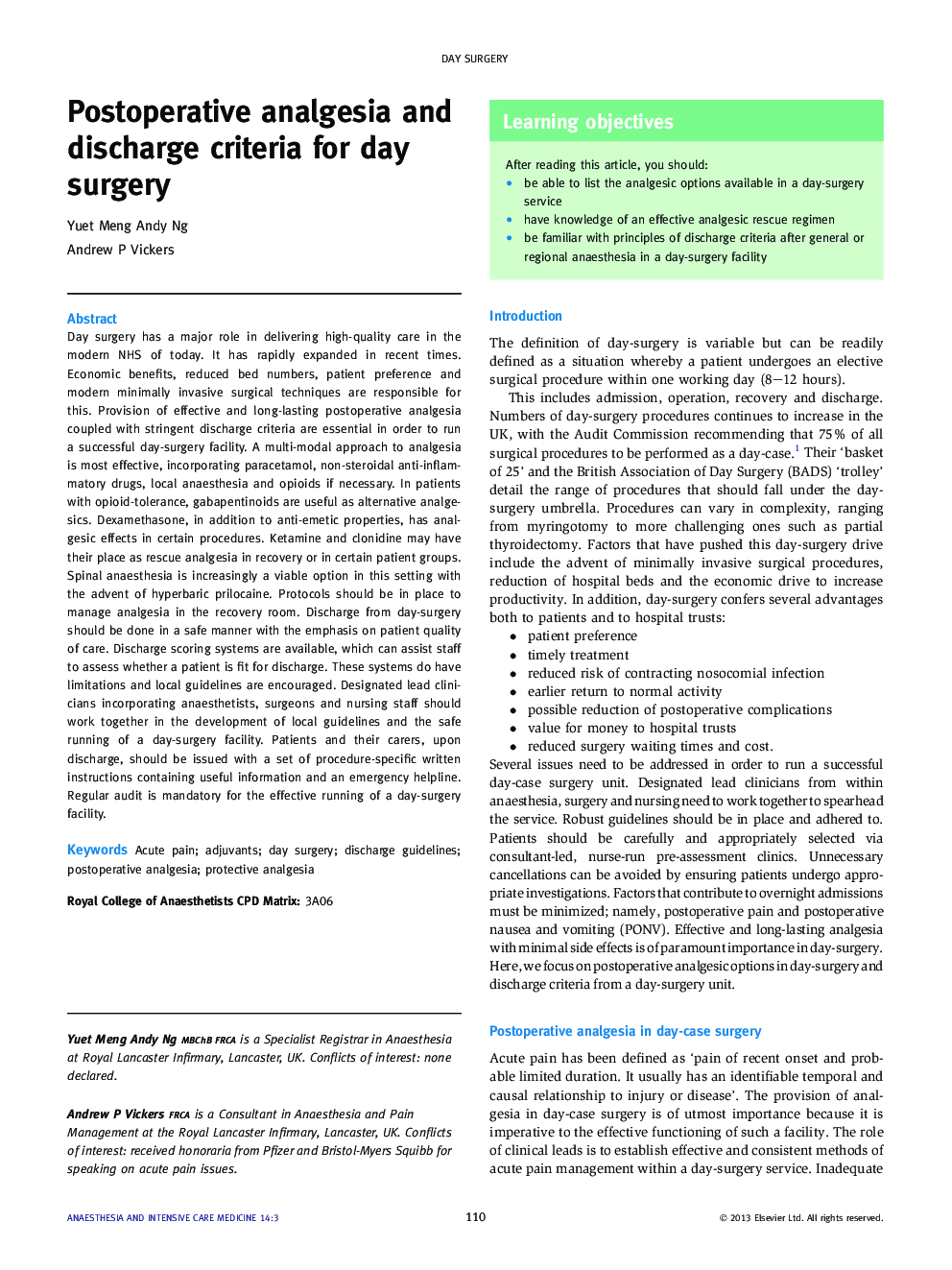| Article ID | Journal | Published Year | Pages | File Type |
|---|---|---|---|---|
| 2742829 | Anaesthesia & Intensive Care Medicine | 2013 | 4 Pages |
Abstract
Day surgery has a major role in delivering high-quality care in the modern NHS of today. It has rapidly expanded in recent times. Economic benefits, reduced bed numbers, patient preference and modern minimally invasive surgical techniques are responsible for this. Provision of effective and long-lasting postoperative analgesia coupled with stringent discharge criteria are essential in order to run a successful day-surgery facility. A multi-modal approach to analgesia is most effective, incorporating paracetamol, non-steroidal anti-inflammatory drugs, local anaesthesia and opioids if necessary. In patients with opioid-tolerance, gabapentinoids are useful as alternative analgesics. Dexamethasone, in addition to anti-emetic properties, has analgesic effects in certain procedures. Ketamine and clonidine may have their place as rescue analgesia in recovery or in certain patient groups. Spinal anaesthesia is increasingly a viable option in this setting with the advent of hyperbaric prilocaine. Protocols should be in place to manage analgesia in the recovery room. Discharge from day-surgery should be done in a safe manner with the emphasis on patient quality of care. Discharge scoring systems are available, which can assist staff to assess whether a patient is fit for discharge. These systems do have limitations and local guidelines are encouraged. Designated lead clinicians incorporating anaesthetists, surgeons and nursing staff should work together in the development of local guidelines and the safe running of a day-surgery facility. Patients and their carers, upon discharge, should be issued with a set of procedure-specific written instructions containing useful information and an emergency helpline. Regular audit is mandatory for the effective running of a day-surgery facility.
Related Topics
Health Sciences
Medicine and Dentistry
Anesthesiology and Pain Medicine
Authors
Yuet Meng Andy Ng, Andrew P. Vickers,
